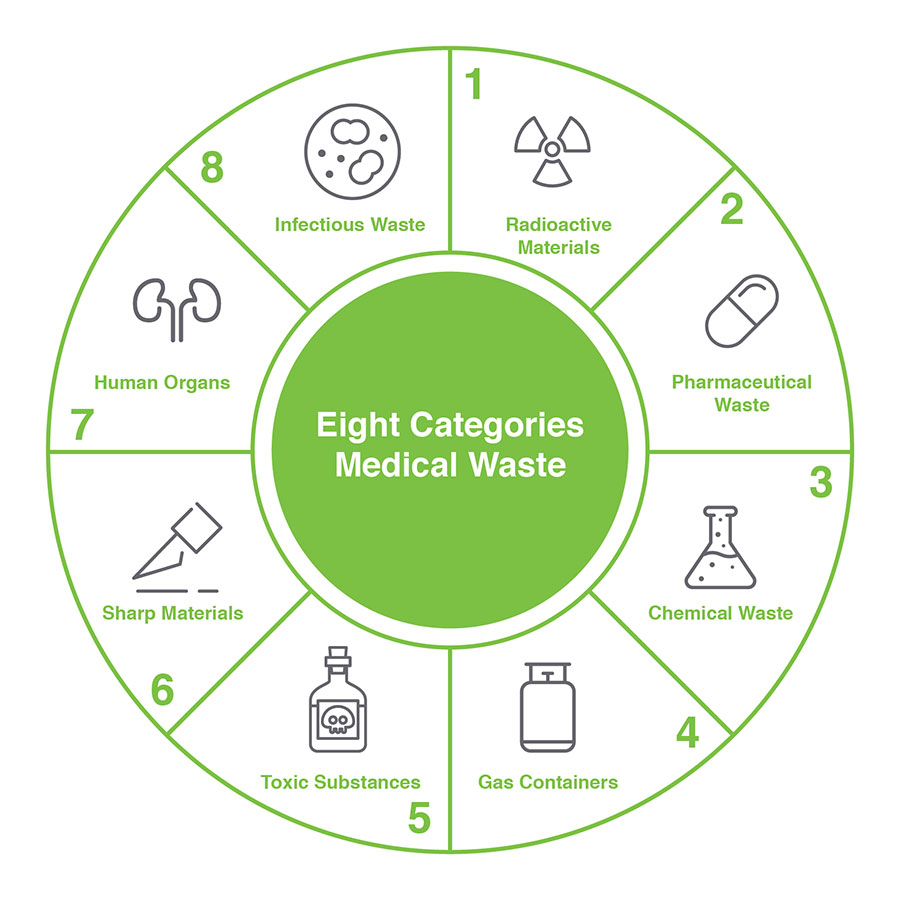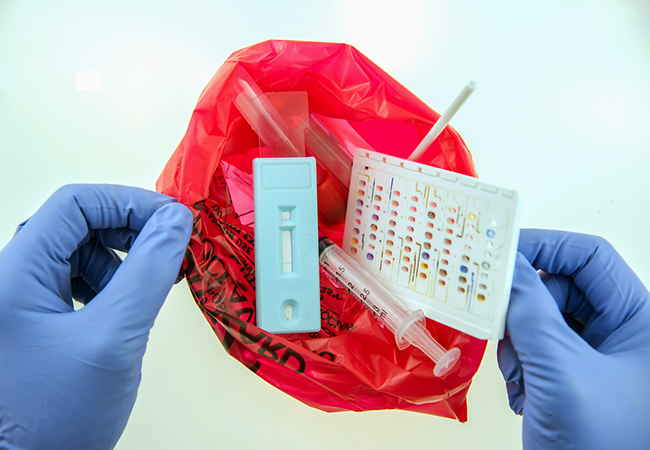Medical Waste Removal Quality: Elevating Security Specifications in Your Center
Wiki Article
Remain Ahead of Regulations: Professional Suggestions on Medical Waste Disposal
In a globe where the medical care market is continuously evolving, it is imperative for medical facilities to remain ahead of regulations when it comes to the correct disposal of medical waste. From understanding the various classifications of medical waste to applying the ideal collection and segregation methods, this discussion will certainly offer workable suggestions and valuable understandings to assist facilities remain ahead of laws in the ever-changing landscape of medical waste disposal.Recognizing Clinical Waste Categories
Understanding clinical waste categories is essential for appropriate disposal and management in medical care facilities. Clinical waste refers to any type of waste generated by health care activities that might position a hazard to public health or the setting. It is essential to classify medical waste properly to guarantee its safe handling, treatment, transportation, and disposal.There are numerous categories of medical waste that healthcare centers require to be acquainted with. The most typical groups consist of transmittable waste, pathological waste, sharps waste, pharmaceutical waste, and chemical waste. Each category has certain standards and laws for its proper monitoring and disposal.
Infectious waste includes materials polluted with blood or various other physical liquids, such as gloves, gowns, and laboratory cultures. Pathological waste refers to human cells, organs, or body parts that need unique handling and disposal. Sharps waste consists of made use of needles, syringes, and other sharp items that can trigger injury and transfer infections. Pharmaceutical waste makes up ended, unused, or contaminated drugs that need careful handling and disposal. Chemical waste includes solvents, disinfectants, and various other chemical substances utilized in health care facilities.
Staying Up-To-Date With Regulatory Changes
Remaining existing with regulatory adjustments is important for healthcare centers to make sure conformity and proper monitoring of clinical waste disposal. medical waste removal service. With guidelines frequently advancing, it is necessary for healthcare centers to remain updated to avoid fines, penalties, and possible injury to the atmosphere and public healthTo remain ahead of regulatory adjustments, health care facilities need to develop a system for monitoring and monitoring updates. This can be done by signing up for regulative e-newsletters, going to workshops and meetings, and actively taking part in industry associations. Additionally, centers should assign a team member or team liable for staying educated and distributing info to relevant stakeholders.
Routine communication with regulative firms is additionally crucial. Healthcare facilities need to establish connections with regional, state, and government agencies to guarantee they know any type of adjustments in laws that may influence their waste management methods. This can be done with normal meetings, participation in public comment durations, and aggressive engagement with regulative companies.
Additionally, healthcare centers should think about partnering with waste monitoring companies that focus on medical garbage disposal (medical waste disposal services with WasteX). These firms are frequently skilled in the most recent regulations and can offer assistance and support to make sure conformity
Applying Proper Collection and Segregation Approaches
To effectively manage medical waste disposal, healthcare facilities need to develop correct collection and partition approaches in conformity with governing standards. Implementing these approaches ensures the secure handling and disposal of possibly unsafe products, shields the atmosphere, and decreases the threat of injuries and infections to medical care employees and the public.
Appropriate collection and partition techniques include the use of designated containers and labeling systems. Healthcare centers should supply clearly labeled containers for various kinds of medical waste, such as sharps, infectious waste, pharmaceutical waste, and non-hazardous waste. These containers should be color-coded and plainly marked to avoid complication and advertise simple identification.
Additionally, medical care centers ought to educate their staff on the correct treatments for gathering and segregating clinical waste. This includes informing them on the different kinds of waste, the proper containers to use, and the importance of adhering to regulations and standards. Regular training sessions and correspondence course should be conducted to make certain that employee stay current on ideal practices.
Furthermore, health care centers need to establish a system for regular collection and disposal of medical waste. This may involve partnering with qualified waste administration companies that focus on clinical garbage disposal. These companies will certainly ensure that the gathered waste is transferred and disposed of in conformity with regulative needs.
Choosing the Right Disposal Techniques

Incineration is just one of one of the most usual and efficient techniques for taking care of specific kinds of medical waste, such as pathological waste and sharps. It includes the controlled burning of waste find out here at high temperatures, decreasing it to ash. Nevertheless, incineration can launch harmful pollutants right into the air and add to air contamination.

Chemical treatment includes the usage of chemicals to decontaminate and neutralize the waste. Microwave therapy makes use of microwave power to warmth and decontaminate the waste.
Ensuring Compliance With Paperwork and Training
After very carefully taking into consideration the ideal disposal approaches for clinical waste, healthcare facilities must guarantee compliance with regulations and minimize environmental influence by applying efficient documents and training treatments. This action is critical in keeping a sustainable and risk-free atmosphere for both health care workers and the public.
Training is More Info equally essential in making certain compliance with policies. Health care workers who deal with clinical waste needs to receive proper training on waste partition, handling, and disposal treatments. This training ought to cover topics such as the appropriate use individual protective equipment, identification of different sorts of waste, and the right disposal approaches for each and every waste category. By offering extensive training, health care centers can empower their staff to make informed decisions and reduce the danger of incorrect waste disposal.
Conclusion
Finally, remaining in advance of laws in clinical garbage disposal is critical for medical care facilities. medical this post waste removal services. Comprehending the different categories of medical waste, remaining upgraded with regulatory changes, applying correct collection and partition techniques, choosing the appropriate disposal approaches, and making sure compliance via documents and training are all essential steps. By complying with these guidelines, health care organizations can properly get rid of and manage of medical waste in a risk-free and responsible fashionFrom comprehending the various classifications of medical waste to implementing the ideal collection and segregation approaches, this discussion will certainly provide valuable understandings and workable ideas to help centers stay in advance of regulations in the ever-changing landscape of clinical waste disposal. - medical waste disposal services with WasteX
The most common categories include contagious waste, pathological waste, sharps waste, pharmaceutical waste, and chemical waste. Healthcare centers need to supply clearly labeled containers for various kinds of clinical waste, such as sharps, transmittable waste, pharmaceutical waste, and non-hazardous waste. Healthcare facilities should establish an extensive system to tape-record and track all elements of medical waste disposal, including types of waste generated, quantities, and disposal approaches used. Medical care employees that take care of clinical waste must obtain ideal training on waste partition, taking care of, and disposal treatments.
Report this wiki page